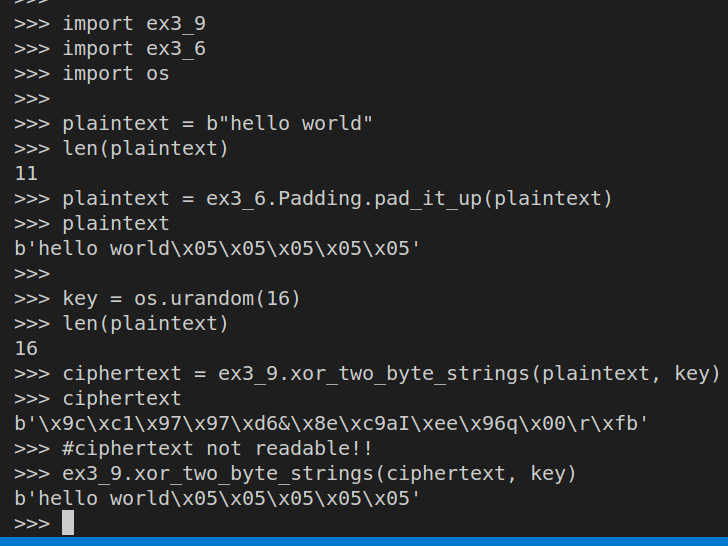3.9 THE MASK OF XOR-0?
EXERCISE 3.9: THE MASK OF XOR-0?
Although this exercise will be even more important in counter mode, it’s useful to understand how XOR can be used to mask data. Create \(16\) bytes of plaintext (a \(16\)-character message) and \(16\) bytes of random data (e.g., using
os.urandom(16)). XOR these two messages together. There’s no built-in operation for XORing a series of bytes, so you’ll have to XOR each byte individually using, for example, a loop. When you are done, take a look at the output. How “readable” is it? Now, XOR this output with the same random bytes again. How does the output look like now?
# ex3_9.py
def xor_two_byte_strings(x: bytes, y: bytes) -> bytes:
assert(len(x) == len(y))
result = []
for _1, _2 in zip(x, y):
result.append(_1 ^ _2)
return bytes(result)